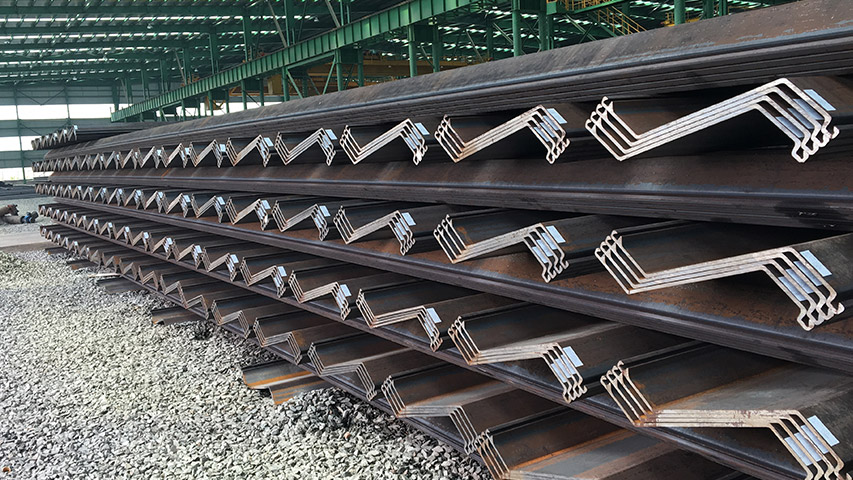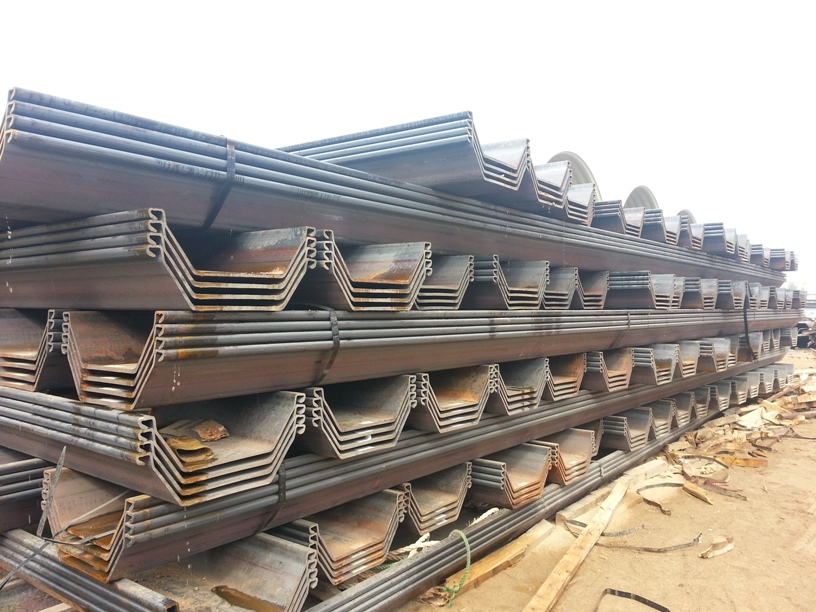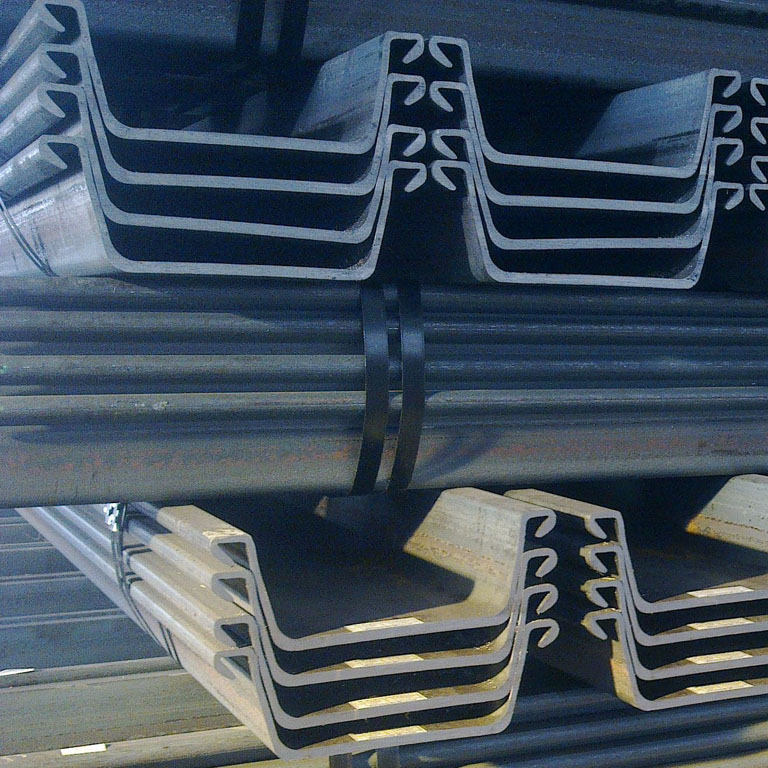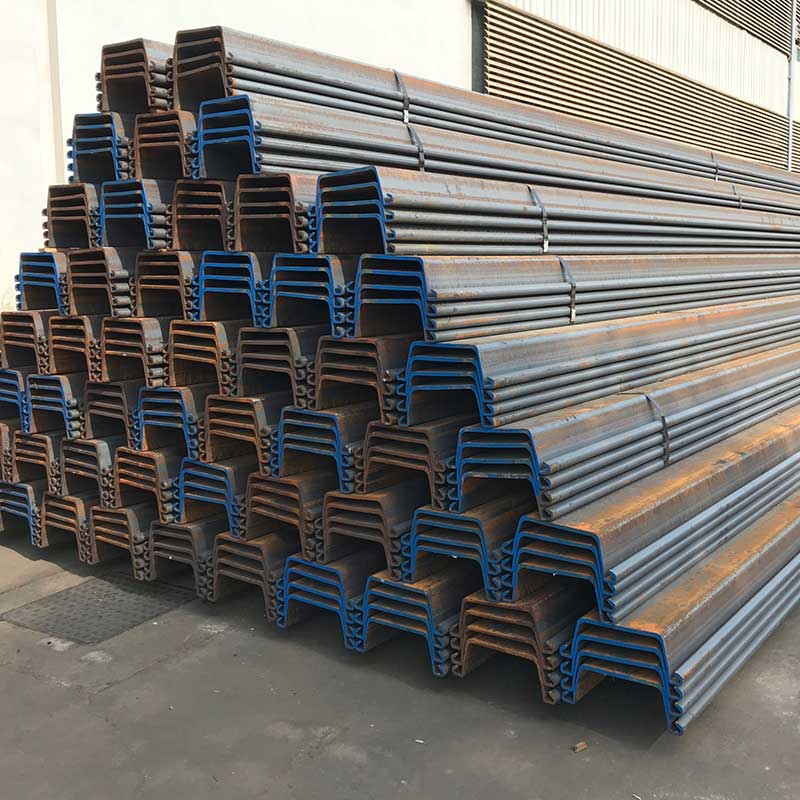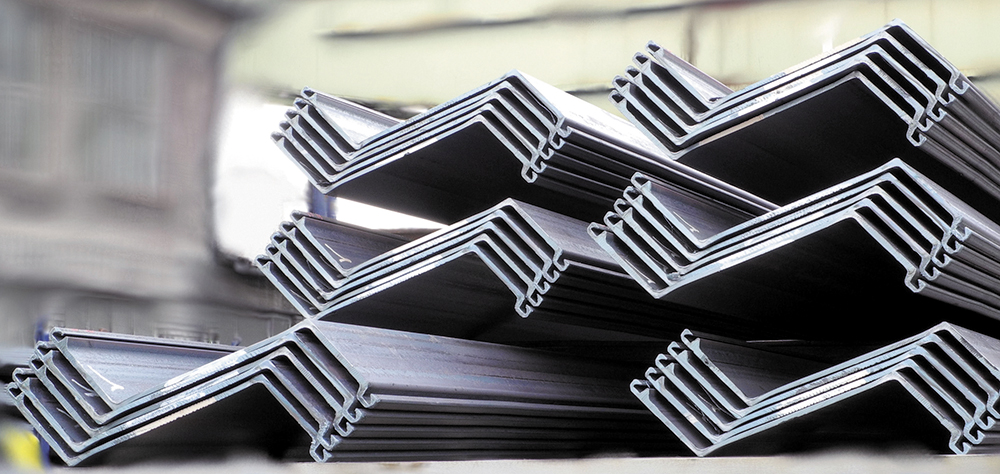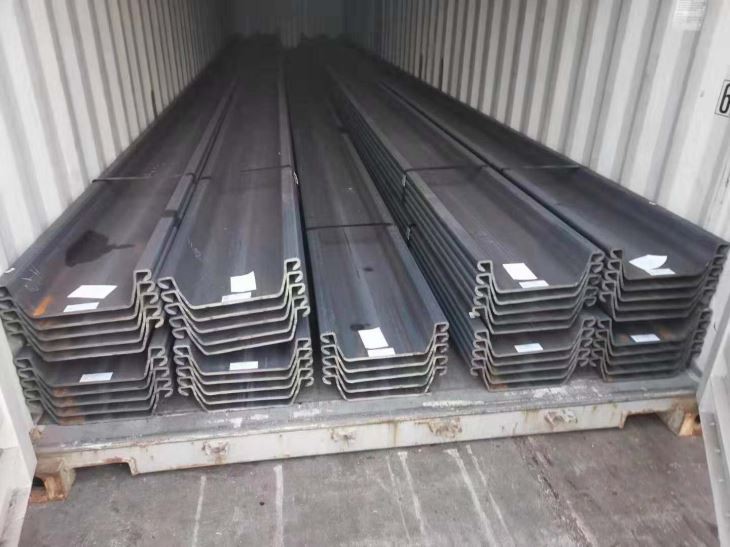Steel sheet piles come in a variety of shapes, размеры, and gauges.
They are broadly categorized into the following types:
- Z-type Steel Sheet Piles: These are the most common type of sheet pile in North America and can be used in a wide variety of applications. Z-profiles are made with one of three methods: ArcelorMittal’s AZ lines, produced by the Mannesmann Line, are rolled; Skyline Steel’s SC, SK, and SM series are cold-formed and Tadotsu and Nippon Steel’s NS-SP, JFE/JFESP have an intermediate modulus.
- Стальные шпунтовые сваи U-типа: U sheet piles retain soil and water just like Z piles with one important difference: U piles have the interlock on the neutral axis. The placement of the lock in the centerline of the wall reduces the efficiency of the section and can cause problems with installation, particularly when deep driving depths are required.
- Straight Web Sheet Piles: Straight web sheet piles are designed for forming cofferdams and are used in conjunction with both Z and U type sheet piles. These piles are not designed to resist bending moments but are used in applications where embedded retaining walls are required.
- Pan Type / Trapezoidal Sheet Piles: They are also known as box piles, and they are used in larger retaining structures. They are usually formed by welding or locking individual sheet piles together to form a box or trapezoidal shape.
- Шпунтовые сваи типа Омега: These piles are similar to Z-type piles but have a different shape – like the Greek letter Omega (Ω). Omega sheet piles are often used in Europe.
- Frodingham Sheet Piles: These are Z-type sheet piles that were originally made in the UK by the Frodingham Iron Company, hence the name. They are now made by several companies around the world.
- Стальные листы с холодным сформированием: This type of pile is formed by rolling at ambient temperatures. While they are less expensive than hot-rolled piles, they also have less load-bearing capacity.
- Hot-Rolled Sheet Piles: These are formed by heating steel to high temperatures. Hot-rolled piles have a higher load-bearing capacity but are also more expensive.
Each type of стальная шпунтовая свая is designed for specific applications, and the choice depends on the project requirements, including the design load, ground conditions, и способ установки.
What are the advantages of using Z-type Steel Sheet Piles compared to other types?
Z-type sheet piles bring several advantages due to their particular shape and interlock design. Here are a few notable advantages:
- Высокая прочность: Z-type sheet piles are usually made from high-strength steel, which gives them excellent structural rigidity. Their shape provides a high section modulus, meaning they can carry higher loads compared to other types.
- Efficient Design: The interlocks on Z-type sheet piles are located at the outermost fibers of the wall, вдали от нейтральной оси. This placement results in an efficient section modulus and provides a high bending moment resistance.
- Driving Efficiency: Z-type sheet piles typically have a large width, which helps reduce the number of interlocks and thus decreases the potential for leakage. The larger width also means fewer piles are needed for the wall, saving installation time.
- Универсальность: Z-type sheet piles can be used for both temporary and permanent applications, and they work well in both straight and curved applications.
- Good Interlock Design: The interlock design on Z-type sheet piles is typically more robust and can accommodate higher tensile loads. This design makes them suitable for high load-bearing walls and high water pressure applications.
- Долговечность: Like other Steel Sheet Piles, Z-type piles are highly durable and can withstand harsh environmental conditions. They can be coated or treated for additional corrosion resistance.
- Многоразовое использование: Z-type sheet piles can be extracted and reused in other projects, making them a sustainable choice.
It’s important to note that while Z-type sheet piles have many advantages, the choice of sheet pile type should always be based on the specific requirements of the project, including soil conditions, groundwater level, требования к нагрузке, and cost considerations.

